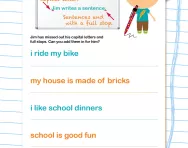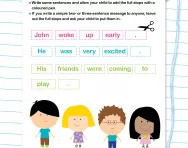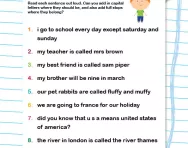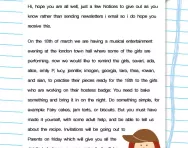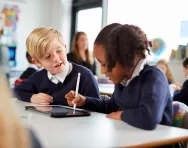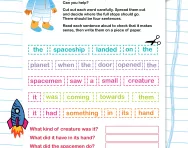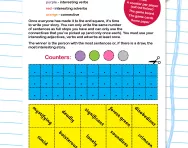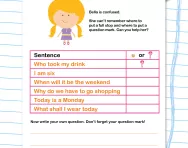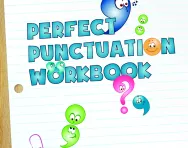Important update from TheSchoolRun
For the past 13 years, TheSchoolRun has been run by a small team of mums working from home, dedicated to providing quality educational resources to primary school parents. Unfortunately, rising supplier costs and falling revenue have made it impossible for us to continue operating, and we’ve had to make the difficult decision to close. The good news: We’ve arranged for another educational provider to take over many of our resources. These will be hosted on a new portal, where the content will be updated and expanded to support your child’s learning.
What this means for subscribers:
- Your subscription is still active, and for now, you can keep using the website as normal — just log in with your usual details to access all our articles and resources*.
- In a few months, all resources will move to the new portal. You’ll continue to have access there until your subscription ends. We’ll send you full details nearer the time.
- As a thank you for your support, we’ll also be sending you 16 primary school eBooks (worth £108.84) to download and keep.
A few changes to be aware of:
- The Learning Journey weekly email has ended, but your child’s plan will still be updated on your dashboard each Monday. Just log in to see the recommended worksheets.
- The 11+ weekly emails have now ended. We sent you all the remaining emails in the series at the end of March — please check your inbox (and spam folder) if you haven’t seen them. You can also follow the full programme here: 11+ Learning Journey.
If you have any questions, please contact us at [email protected]. Thank you for being part of our journey it’s been a privilege to support your family’s learning.
*If you need to reset your password, it will still work as usual. Please check your spam folder if the reset email doesn’t appear in your inbox.
What is a full stop?

What are full stops?
A full stop is a punctuation mark used to separate sentences. Full stops (and capital letters) are the first grammatical terms children are introduced to at school.
In American English, full stops can also be referred to as 'periods'.
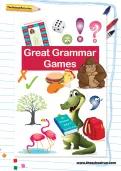
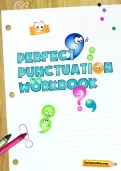
Download Fantastic FREE Grammar Resources!
- Perfect Punctuation Workbook
- Grammar Games Pack
- PLUS 100s of other grammar resources
Once a sentence has a verb and a subject, a full stop (or a question mark or an exclamation mark, which children are introduced to later in KS1) can be placed to let the reader know that the sentence, or a complete thought, has ended.
When do children learn about full stops in primary school?
Full stops are not required to be taught until Year 1, when a child reaches Key Stage 1. However, many Reception teachers introduce capital letters, finger spaces (a finger sized gap between words) and full stops during a child’s first year at school in Reception. Many EYFS teachers believe that it is far simpler for a child to learn how to officially end a sentence when first learning to write, rather than introducing them later in Year 1. If not taught during EYFS, full stops will be introduced during Year 1.
As with most teaching objectives, children's understanding of full stops is consolidated in every year group, even in Year 6! If your child keeps forgetting to place a full stop at the end of a sentence, check that they really understand how full stops are used. The earlier any misconceptions can be addressed, the better – it's hard to teach a child to use a semi-colon when they find full stops tricky!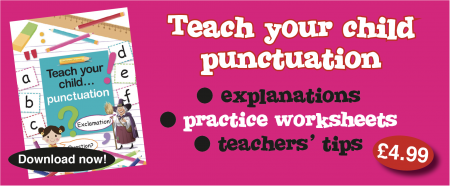
Although a Year 1 topic, the teaching of full stops is part of more advanced grammar objectives, too. In Year 3, once inverted commas (speech marks) are introduced, children will learn to punctuate direct speech (words directly spoken) by ending the spoken words with a full stop, exclamation mark or question mark.
For example: The boy replied, “I’ll be home after football.”
In Year 5 and Year 6, when bullet points are taught, children are asked to either leave each bullet-pointed phrase without a full stop, or use a full stop every time. What is important is that they must use their choice consistently, and not change their punctuation choice between bullet points.
How are full stops taught in the primary classroom?
Your child will be encouraged to read or say aloud a basic sentence. They might also learn to perform an action to indicate where they think a full stop will be placed (this is known as ‘Kung-fu’ punctuation and really helps children to remember something needs to happen at the end of a sentence!).
Written work will help children to recognise where they think a sentence has ended and needs punctuating with a full stop.
Try asking your child to add the full stops to these sentences correctly:
Teachers will also encourage children to ‘hold a sentence’: this is a dictation-like technique according to which a short sentence is read out by the teacher and pupils are asked to remember it and try to write it down, placing a full stop at the end. Children might use ‘sound buttons’ to verbally record their sentence, in order to play it back to themselves when trying to remember it and write it down.
The writing of a series of independently-created sentences, ensuring all full stops are correctly placed, will be taught last. It is crucial that a child can speak aloud in sentences and can recognise sentences they read before they are expected to write them down accurately.

